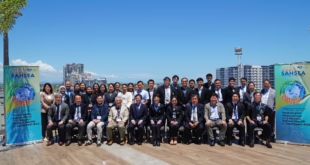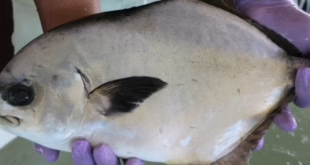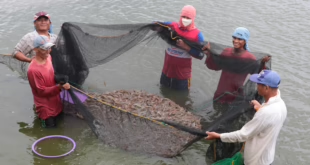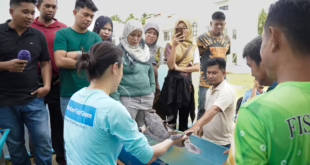by Development Communication Section

During the APEC 2015 press briefing the Southeast Asian Fisheries Development Center Aquaculture Department (SEAFDEC AQD) Chief Dr. Felix Ayson said “There is a need for continuous research and development (R&D) and innovation as well as institutions that will undertake these to intensify aquaculture production towards food security.”
“If you think of a fish species that is really suited for the masses then you should go for fish species that are cheaper to produce – and one of these is milkfish” said Dr. Ayson. Dr. Ayson elaborated, “We can continue to produce milkfish and address the problem of food security but the problem is the volatility of the market price.” At present there are only three countries that are producing milkfish and these are Indonesia, the Philippines and Taiwan.
One area in milkfish seed production that Dr Ayson pointed out that needs further scientific study is on how the embryo and larvae of “bangus” or milkfish would be able to survive water temperatures higher than the present normal levels due to climate change.
He cited studies conducted at SEAFDEC/AQD on the rabbitfish that showed that even at a temperature of 33ºC rabbitfish still spawned eggs but the embryos did not survive, where normal levels would be around 30 ºC. If milkfish would behave similarly like rabbitfish, then we will have a problem. This scenario would be a threat to aquaculture production because if the embryos would not survive we will have no fry with which to stock milkfish production ponds.
Higher temperatures due to climate change would also affect the survival and growth of seaweeds and mud crabs, the latter a P3-billion industry in the Philippines, and we are having studies to address these concerns too, he added. The study on seaweeds would focus on how to maintain the production of seaweed seeds based on species-environment interactions while those on mud crabs would be on how to keep them producing offspring at higher temperature.
“All these present activities of SEAFDEC/AQD address the global concerns for food security, considering that at present, for every two fishes you see in the market, one of that is produced by aquaculture,” Dr. Ayson added.




 SEAFDEC/AQD Southeast Asian Fisheries Development Center | Aquaculture Department
SEAFDEC/AQD Southeast Asian Fisheries Development Center | Aquaculture Department



